Use cases, RPA tools, and steps on how to automate the candidate journey for a repeatable, scaleable and delightful recruitment process.
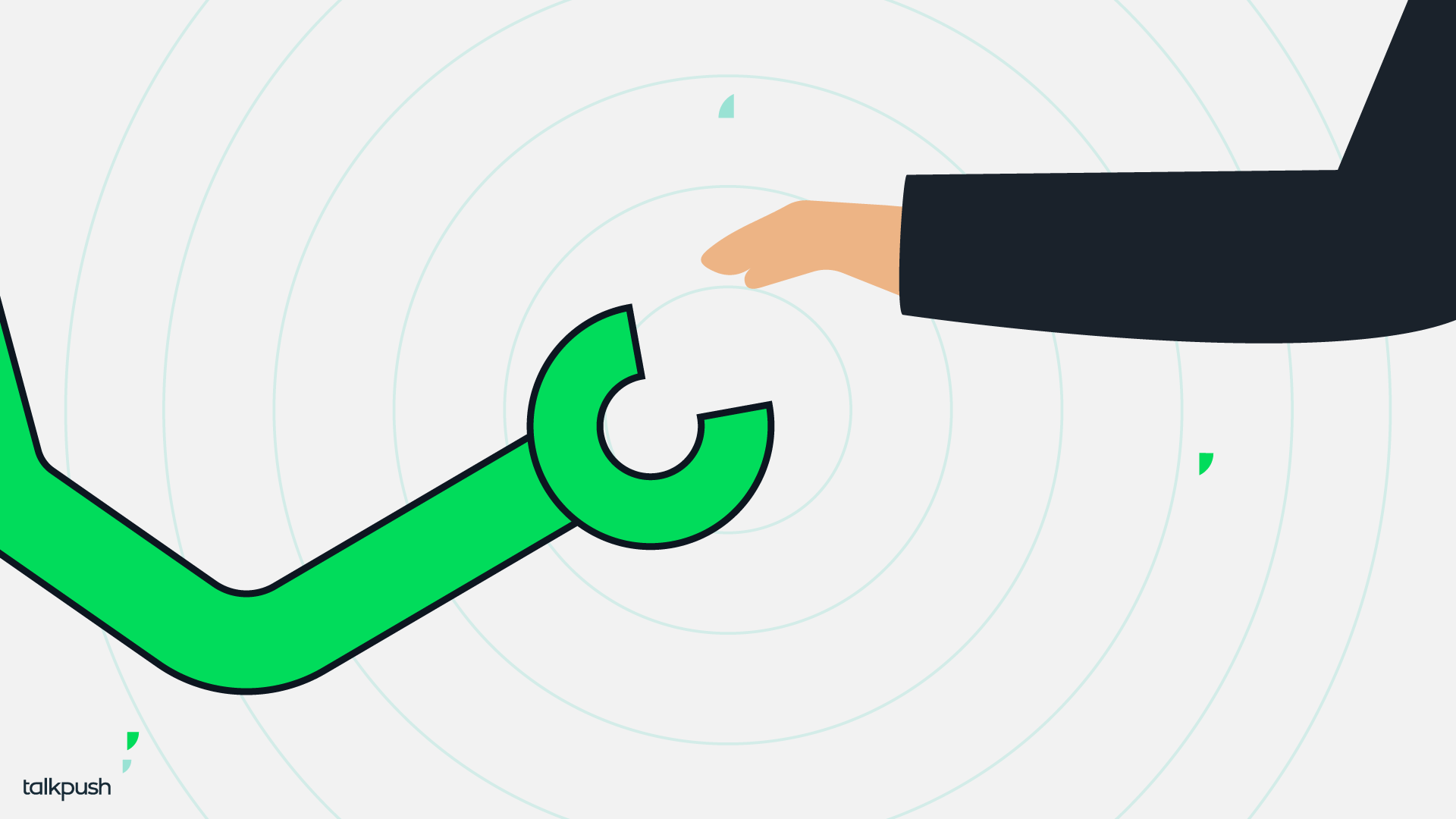
Talent Acquisition has transformed rapidly, notably in high volume recruitment (e.g. hourly workers, blue collar workers, graduate hires, field teams, etc.) , leveraging automation and social media to engage with 10x to 100x the talent pool that recruiters used to manage.
Beyond upping the sourcing on social platforms, the best employers rethought the candidate journey by validating job suitability at the very front of the funnel (candidates who just started their application) to minimize the volume of in-person live interviewing that needs to happen.
And not only that, with automation, savvy recruiters have been able to set parameters at every step of the journey, creating filters, so that they only spend time with the most qualified, but still deliver a great experience to all.
This redesign work is usually not completed by the IT department. Nor by management consultants.
Thanks to the no-code revolution, these new workflows are now designed and implemented entirely by the Talent Acquisition team, with a new breed of recruiters who can “drag and drop” their way through problem solving, predicting possible glitches in the recruitment process, eliminating extra steps, re-engagement, and even friendly encouragement.
They’re not developers, automation experts, or engineers — hence the no code revolution — but recruiters who thrive in the calm environment of a design studio, mapping out processes, running A/B test campaigns, configuring workflows, and exercising empathy on behalf of the candidates when using technology.
Table of Contents
What is RPA?
.jpeg?width=1920&name=1_B96iQctx7AePs-0LxhyBMw%20(1).jpeg)
Robotic Process Automation (RPA) is the automation of processes based on pre-assigned parameters.
Huh?
It just means that by using automation technology, you create the steps the candidates have to go through, and design a workflow based on your needs and candidate qualifications.
For example:
IF a candidate lives 10 miles from our main office THEN he gets the list of jobs available in the area.
The beauty of it is that once it's all set up (which does require some important legwork and deep knowledge on candidate behavior) it's done. It's repeatable and on-going, without human intervention.
6 Steps Towards a Fully Automated Process

Since there’s only so many hours in the day, recruiters are increasingly turning towards automating the most tedious tasks, giving themselves the time they need to to handle a deeper pool of candidates, honing in on the most qualified, without losing out on delivering a top-notch candidate experience throughout the entirety of the hiring process.
To stay competitive, businesses should use automation tools to create workflows, and explore how each stage of the recruitment funnel could be accelerated.
But, to get here, you may want to ease into it, automating only one or two functions first, while working towards an end-to-end rollout.
Here’s a blueprint for that step by step approach:
1. First contact
Use a recruitment chatbot that your candidates can interact with effortlessly to apply to any position. This conversational agent will ease candidates along the application process, keeping them informed on their status, answering FAQs, and being your conduit for re-engagement campaigns.
Our data indicates that the completion rate for job applications through a Messenger or Whatsapp bot is above 95%, much higher than the traditional online applications.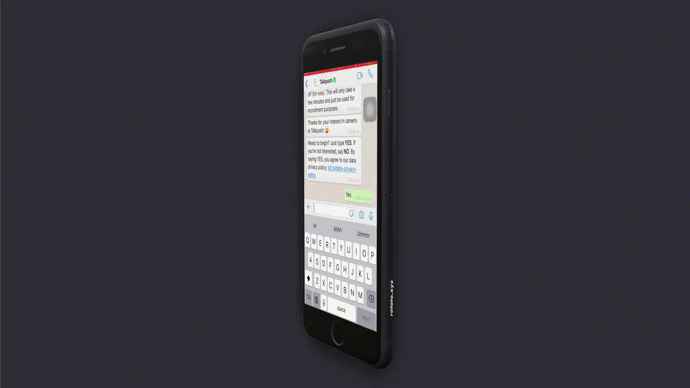 Almost 50% of candidates drop off when they’re required to manually type in their resumes.
Almost 50% of candidates drop off when they’re required to manually type in their resumes.
Keep in mind that more than a third of applications typically come outside of standard working hours (nights and weekends), so having a chatbot on duty 24/7 will yield outsized return on investment if you’re looking to build for a deeper talent pool.
2. No More Manual Resume Screening
Now that you’ve got yourself a friendly bot helper, you can set it up to screen your candidates before investing precious recruiter time with them.
You may want to start with a simple observational research: how are your recruiters and hiring managers deciding which applications to keep, which ones to ignore? You may find that some of the screening that happens is not something you could infer from the job description (e.g. they may not want to hire candidates coming from certain companies).
Adding those screening questions as part of the campaign will immediately relieve the team of manual work. You can then automatically shortlist candidates based on level of education, relevant work experience or location. The ones who don’t meet the basic criteria can be automatically rejected — and notified — without recruiters ever having to step in.
Collecting this data digitally (vs. over a phone call) also means you will be able to search it and use it for future sourcing campaigns.
3. Consolidating Data
Having all your candidate information (completion and engagement rates, response times, qualifications, etc), as well as job campaign performance per channel, all in one place gives recruiters a definitive edge.

Unfortunately, recruiters are often spending way too much time logging into multiple platforms and scraping data and then spending time on data entry.
With most systems now having rich APIs (here is ours) system integrations are not as expensive as they used to be, which means you might be able to give your recruiters some of that time back with a quick integration.
A proper CRM should offer them a unified view of all the candidate data, from the ATS, social media, events, assessment platforms, and every other system involved in the candidate journey.
A fully digital process also yields tons of new data (e.g. how many times did the candidate reschedule a meeting? How long does it take for them to complete the screening? etc.) which can be used to fine-tune the screening and speed things up further.
4. Interview Scheduling
One of the easiest things to automate is also one of the most time-consuming and frustrating tasks of recruiters: scheduling interviews.
A simple calendar integration with your CRM, which candidates can access as soon as they are (automatically) shortlisted can free your recruiters from having to send endless back and forth emails to shortlisted candidates trying to nail down the right time for a phone or in-person interview.
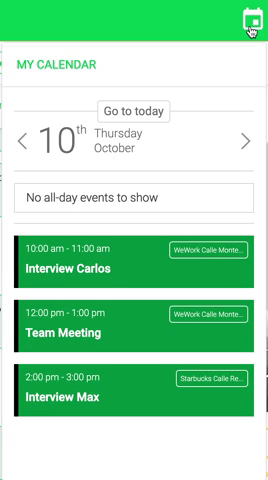
By automating this task, recruiters can send candidates a link to self-schedule according to available slots, and have their calendars constantly in sync with all of their interviews. This eliminates human error and facilitates notifications of cancellations, changes, and reminders of when the interview is coming up.
This automation can reduce your average time to hire by a few days.
Having scheduling digitized also means you can automate all the “anti ghosting” workflows, sending reminders to candidates ahead of interviews, and rescheduling them when they are no-shows.
Talk about capitalizing on missed opportunities, huh?
5. Integrating Assessments
I don't recommend automating the actual interview, there’s too much value in a skilled human recruiter to evaluate if a candidate is the right one for the job.
And, we don’t buy into the whole AI-promised land of facial recognition to screen for certain emotions… But even without relying on futuristic AI, there are great time-savings to be generated from collecting and sending data using a chatbot.
You can ask candidates to send rich media (video or voice responses), so that recruiters can review them in bulk later on. Asynchronous conversations are much more efficient than manually sifting through resumes, participating in phone interviews, or video conferences to paint a complete picture.
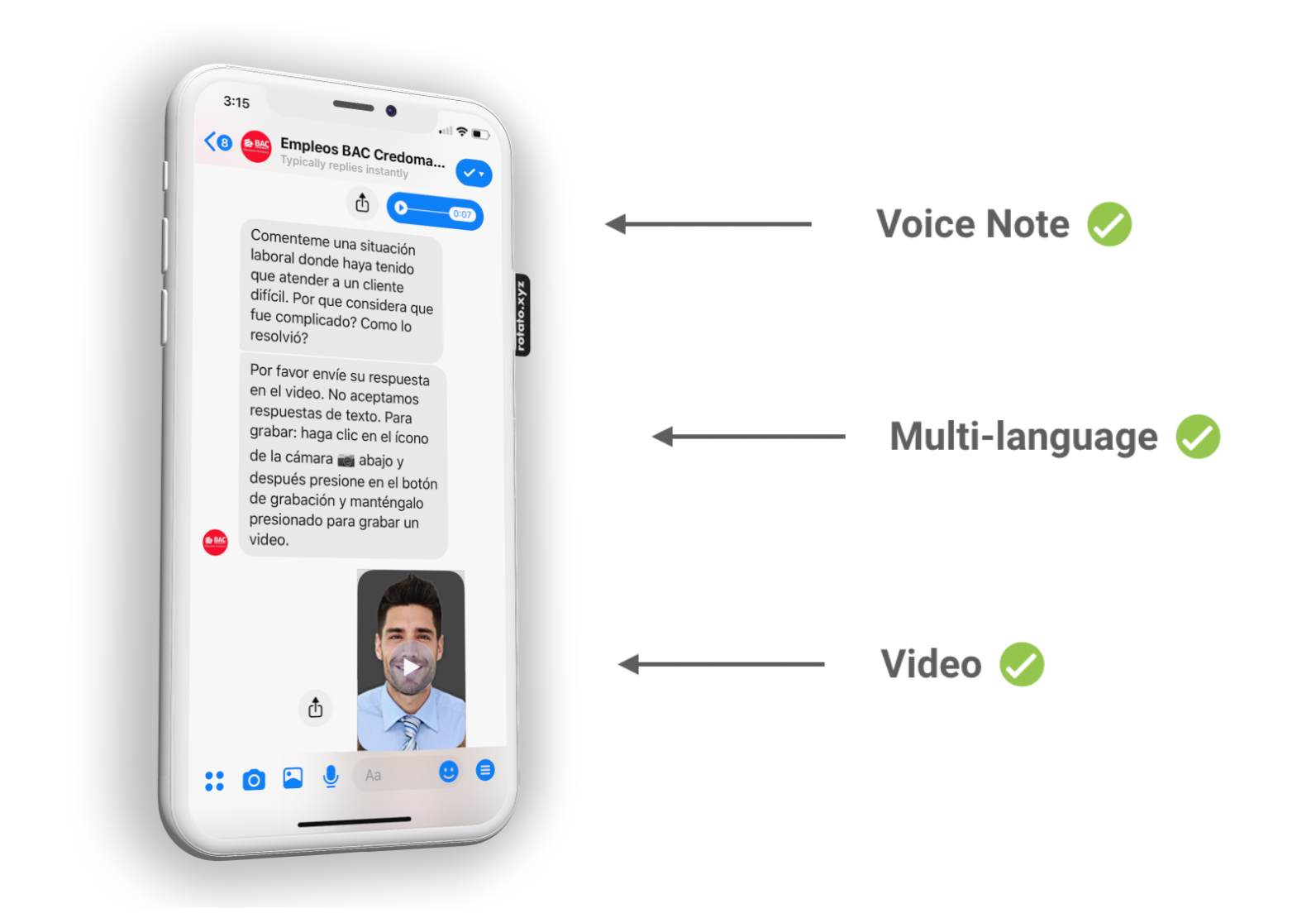
Most employers did not wait for RPA or for chatbot technology to automate assessments, but they often struggle to get their candidates to complete those online assessment in a timely manner, and have to resort to human intervention with recruiters guiding the candidates through the process.
This is a process which is perfect for chatbots on the preferred messaging platform of your target market (e.g. SMS in the US, Messenger in the Philippines, WhatsApp in India). A chatbot platform like Talkpush supports bi-directional integration with many assessment platforms, such as CrossKnowledge, HireIQ, etc.
6. Stop the ghosting before the onboarding process
You’ve sourced hundreds (or thousands) of candidates. You’ve screened them, interviewed them, collected heaps of data, and made the best decision you can make, finally giving your chosen candidate the employment contract. And miracle of miracles: she agreed to sign it!
This is how far most recruiters are willing to go, forgetting that 10 to 30% of candidates will vanish from the time they sign the contract to their actual start date. This type of “ghosting” (between the signing of the contract and the start of the work) is often under-reported and misunderstood.
While it will never be completely eliminated (situations change, and candidates should do what is in their best interest at any given time), it can be significantly reduced by constant engagement with the candidates throughout this period.
Recruiters don’t usually have the time for this, as they are already working on their next requisition, so this is a perfect opportunity to create an automated workflow to stay top of mind and to anticipate questions from new hires.
Automating communications — which means freeing up the recruiters to do more high-touch work— can reduce hours of work and job satisfaction for recruiters.
As much as possible, get your talent acquisition team involved in designing the messaging so that it reflects their voice and personality, and they can feel the bot serves as an extension of themselves, not as a soulless replacement.
Benefits of using Automation in Recruitment
It all boils down to two things: saving time and money.
Plus, you get to give every candidate status updates, answer questions, and never leave them hanging — so three things.
Time, money, and employer brand.
Save time using Attended RPA Bots
Robotic Process Automation (RPA) is becoming another buzzword in the TA Tech space, with good reason. Automating repetitive tasks is the foundation of competitive recruitment strategies.
By automating functions hiring teams don’t actually need humans for, such as answering FAQs or pre-qualifying candidates, employers are seeing quantifiable results, as the hours saved are relatively easy to measure.
With recruiters spending less time sifting through resumes, they can focus their attention on building a competitive advantage for the employer brand they represent. Like, creating marketing campaigns for priority positions and skilling up in social media sourcing.
Save money with automation
Faster hiring cycles, ongoing re-engagement campaigns, and accurate pre-screening = reductions in cost per hire.
That's it.
Ok, not it. But pretty much.
By automating your recruiting process across multiple channels like Facebook, Job Boards, and your own career site, you spend less resources and capture double the leads, capitalizing on high intent with well-timed nudging (messaging) delivered automatically.
Increase candidate satisfaction
Workflow automation software can automate up to 98% of top of funnel tasks. Studies show that candidates are just as happy to communicate with a bot as they are with a human.
To be fair, the alternative usually meant never hearing back anything at all.
AutoFlow: the no-code workflow creator

Talkpush wants to help recruiters redefine their work.
Our focus has been to provide a platform that handles top-of-funnel tasks, giving recruiters more time to make valuable human connections with their candidates at scale, with chatbots connected to a CRM that can source, manage, track, and communicate with thousands of candidates daily.
With AutoFlow, the CRM now takes automation to the next level making recruiters the architects of the entire candidate journey and eliminating all repetitive actions, through assisted RPA, combining bot actions with parameters set within the workflow.
How it works
Recruiters are in charge of defining each stage of the candidate journey. In the campaign set up, they can determine how the candidate attributes affect their outcome.
Any attribute can be used to help reach a better decision, such as whether they showed up for their interview on time, or if answered a set of prerequisite questions correctly.
With Autoflow users can include:
-
Reminders
-
Follow-ups
-
Solicit documentation
-
Questions
-
Emails
All according to their stage in the process, as part of your newly automated candidate journey.
Leverage your talent pool
Another key feature of Autoflow is that it can sort passive candidates, those who interacted with your company but didn't complete a job application. By combing through your unassigned campaign folder, Autoflow can offer those candidates suggestions according to education, location, or other data — the recruiter makes that decision.
This allows recruiters to easily re-engage and tap into their talent pool in the most effective way.
The Augmented Recruiter
Recruiters are now in charge of automation, without having to be expert programmers. AutoFlow augments their capability by taking the repetitive out of recruitment for good.
Schedule a demo to see it in action. 👇
Examples of real-life candidate journeys using workflow automation
If you've made it this far, you're in for a treat.
It's time we take all those concepts we just went over and see their real life applications.
Transcom's re-engagement message
Ces is Transcom's, global BPO, friendly recruiter bot.
When candidates start their application on Facebook Messenger, but don't finish it after 24 hours, he sends them this 👇
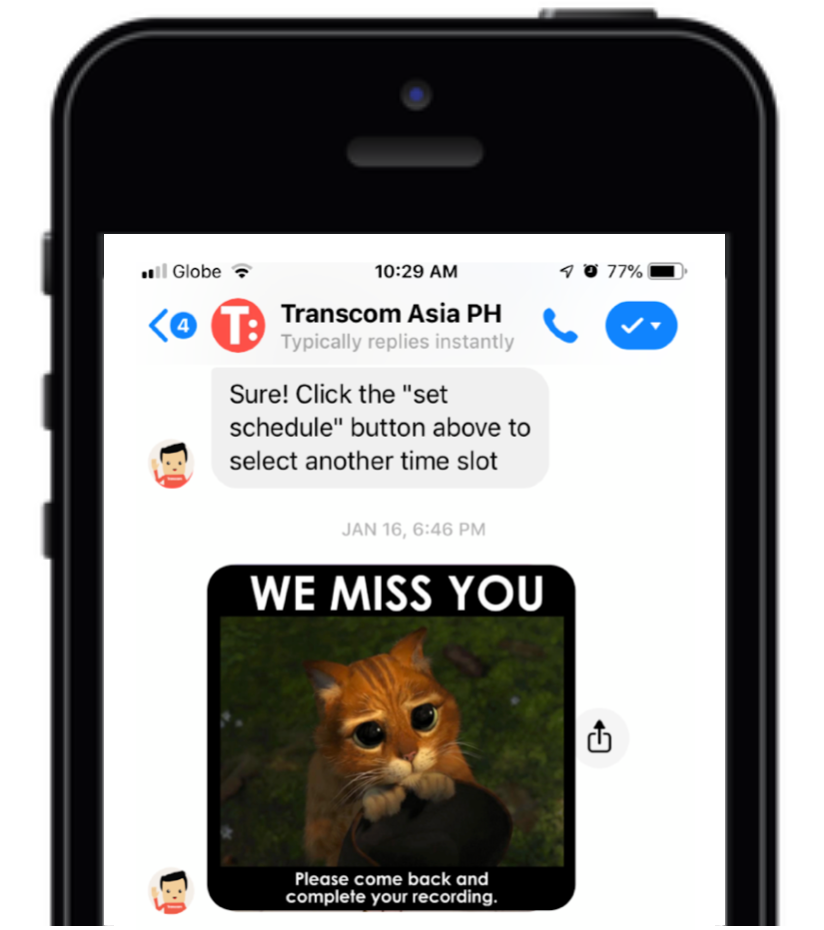
Concentrix's Facebook job ads
Concentrix uses paid media to target potential candidates on social media.
Once a candidate clicks to apply they're immediately directed to the Facebook Messenger application led by their chatbot Coco.
This immediacy has increased their conversions and expanded their talent pool.
Coco 👇
RPA Recruitment FAQ's
-
What does RPA Robotic Process Automation accomplish?
It automates low value tasks to create a repeatable and scaleable process across a variety of channels. In recruitment it unifies the candidate journey, frees up TA teams to do valuable work, and ensures that each candidate has a delightful experience, no matter where they engage with the application.
-
What are the skills needed for Robotic Process Automation?
In recruitment RPA tools are readily available, recruiters don't need coding or engineering skills. They do need a deep knowledge of their candidate preferences, skills required and the capacity to build these workflows using IF and THEN parameters.
-
How does robotic process automation affect the recruitment industry?
It has made competition fierce! As more companies automate top-of-funnel tasks, candidates expect to be notified of their status and to be moved down the process FAST. It's all about immediacy and constant communication.
-
What is the difference between Robotic Process Automation and AI?
RPA is all about automating repetitive human tasks, while AI promises to make advanced, unbiased decisions. These lyrical promises for AI may delight some of the leaders in HR or other functions, but when the time comes to justify the budget, the business cases presented end up being much more prosaic and down to earth. Indeed, it usually turns out that 99% of the cost savings generated by this technology is in automating repetitive tasks.
👉Ready to automate your recruitment process with RPA? Book a demo to get started. 🚀




